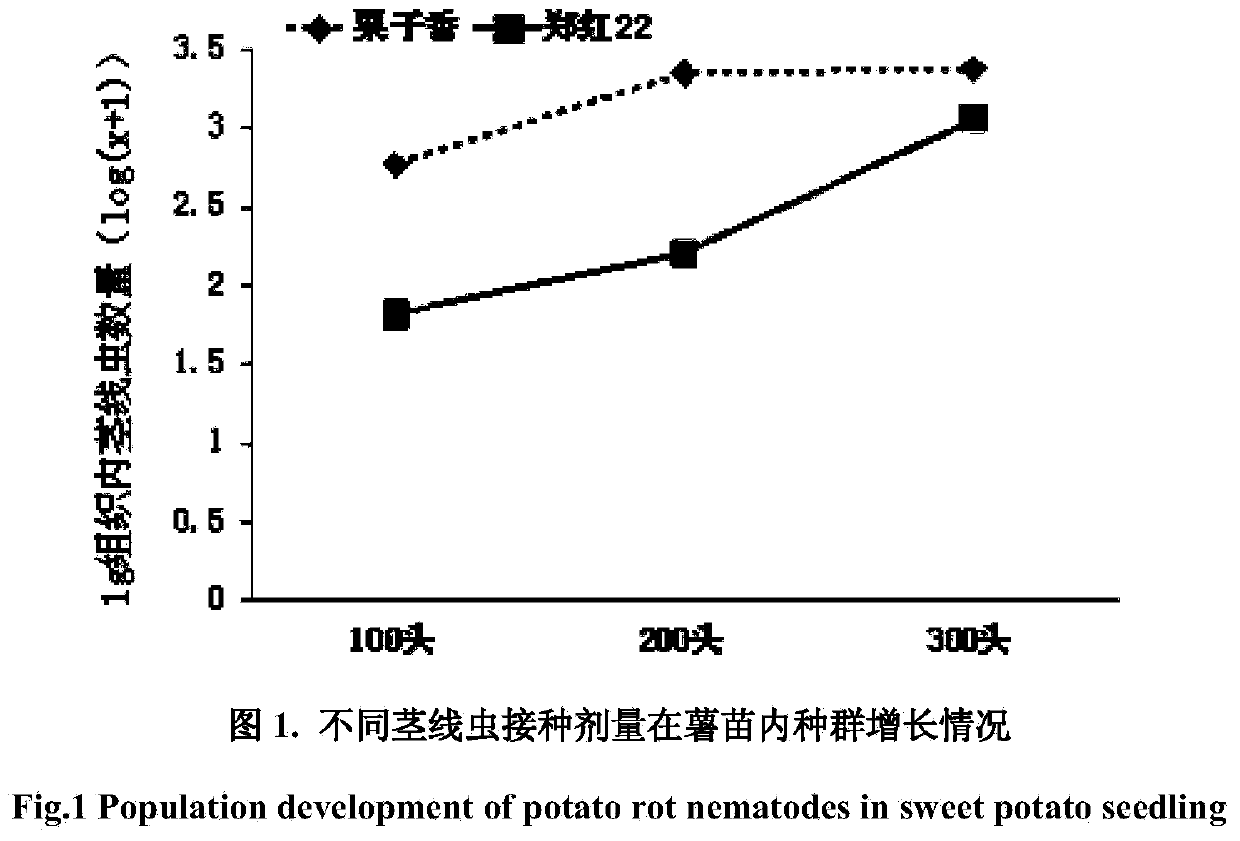Stem nematode disease resistance identification method for sweet potato related wild species
A technology for identification of resistance and stem nematode, which is applied in the identification of resistance to stem nematode disease of wild relatives of crops and the identification of resistance to stem nematodes of wild relatives of sweet potato, which can solve the problem that the identification method of resistance is not applicable. Wild species and other problems, to achieve the effect of shortening the test period, simple operation process, and short test period
- Summary
- Abstract
- Description
- Claims
- Application Information
AI Technical Summary
Problems solved by technology
Method used
Image
Examples
Embodiment 1
[0025] Plant the wild sweet potato species to be identified in flowerpots filled with 1 kg of sterilized soil, and plant 1 plant in each pot; inoculate 200 stem nematodes into each pot using the root dripping method, and dig out the underground stem part of the wild species after 40 days to treat stem nematodes. The damage caused by the disease was investigated to evaluate the resistance of wild sweet potato species to stem nematode disease;
[0026] (1) Cultivation of D. nematodes: Collect tuber tubers infected with D. nematodes in the field and bring them back to the laboratory to separate D. nematodes by the shallow dish method. After microscopic examination confirmed that D. sweet potato was D. sweet potato, it was sterilized with 1% streptomycin sulfate, rinsed with sterilized water three times, and D. Cultivate in a 25°C incubator for later use.
[0027] (2) Preparation of materials to be tested: Put 1 kg of sterilized soil into a circular plastic flower pot with a diam...
PUM
 Login to View More
Login to View More Abstract
Description
Claims
Application Information
 Login to View More
Login to View More - R&D
- Intellectual Property
- Life Sciences
- Materials
- Tech Scout
- Unparalleled Data Quality
- Higher Quality Content
- 60% Fewer Hallucinations
Browse by: Latest US Patents, China's latest patents, Technical Efficacy Thesaurus, Application Domain, Technology Topic, Popular Technical Reports.
© 2025 PatSnap. All rights reserved.Legal|Privacy policy|Modern Slavery Act Transparency Statement|Sitemap|About US| Contact US: help@patsnap.com



